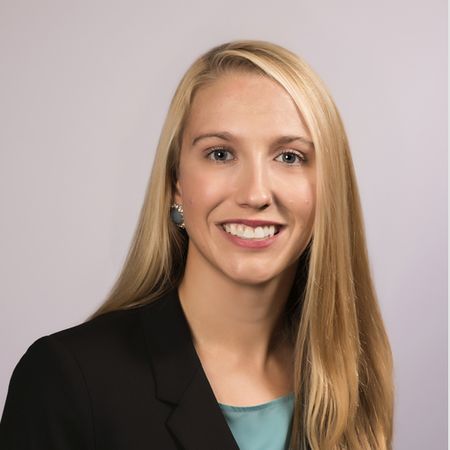Executive Order 2020-07, issued on March 16, 2020, suspended key elements of the OMA regarding board member attendance and participation at public meetings. Normally, the Open Meetings Act requires that a majority of a quorum be physically present at all meetings. Additionally, it places strict conditions on when a board member may participate in a meeting remotely. However, Executive Order 2020-07 has temporarily suspended both of these rules. Therefore, until April 8, 2020, all board members are permitted to participate in a board meeting remotely, without question.
Furthermore, on March 20, 2020, the Governor issued Executive Order 2020-10 (the “Stay-at-Home Order”) requiring Illinois residents to remain at home and limiting individual’s travel to only Essential Activities, Essential Governmental Functions, or to Operate Essential Business Operations. Included in Essential Operations was the operation of schools. Furthermore, the Stay-at-Home Order revised Executive Order 2020-07 to limit gatherings to ten (10) people or less. The Stay-at-Home Order is in effect starting at 5:00 PM on March 21, 2020 and running through April 7, 2020. As of right now, the impact of this Order on public meetings remains unclear.
That being said, if districts must hold a board meeting between now and April 7th, they should continue to comply with the other requirements in the OMA, including the holding of a meeting that is open to the public. While the Stay-at-Home Order limits people’s ability to leave their homes and limits gatherings to ten (10) people or less, it appears that boards are still required to make their meetings available to the public.
Therefore, the following is a list of considerations and concerns that need to be addressed, in light of the temporary changes to the OMA and the current Stay-in-Place Order.
Timeline for the Application of the Suspended Rules:
- Executive Order 2020-07’s OMA rules are in effect only until April 7, 2020. Therefore, if you hold a board meeting after April 7, 2020, the suspension of physical attendance will no longer be in effect. The Governor or General Assembly may take additional action to continue the suspension, but no such action has taken place yet.
- If the meeting is going to be streamed, a person still must be physically present at the meeting site. The public is still permitted to attend the meeting, regardless of whether the board will be physically present. NOTE: It is unclear what the effect of the Stay-at-Home Order will have on the ability of people to attend a public meeting. Likely, a superintendent or district official can be present under the Essential Function rule; however, public attendees are not clearly permitted to leave home to attend the meeting. Therefore, consider cancelling your meeting if the business to be taken up can be delayed.
Normal Meeting Rules Still Apply:
- While Executive Order 2020-07 provides that a majority of a quorum does not have to be physically present, the meeting still requires a majority of a quorum to be “present” in order to hold a legal meeting. Therefore, you still must get at least a majority of a quorum to participate in the meeting, either remotely or physically at the meeting site.
- Special and emergency meeting rules are unchanged, except that board members may participate in such meetings remotely, too.
- Closed session is still closed to the public and should be recorded verbatim, as usual. Procedures for entering into closed session are still to be adhered to, even if board members are participating remotely.
- If a matter is not on the agenda, formal action cannot be taken by the board.
Agenda and Notice Requirements:
- Agenda and notice posting rules for meetings are unchanged. Agendas still must be posted at the meeting site, at the District office, and online 48 hours before the meeting is held.
- If your meeting site has changed from its normal meeting site, make sure such information is clearly communicated on the notice posted online and that a notice is posted at the new site.
- News media outlets must remain informed in the same manner as usual.
- Changes in the meeting format, such as permitting board members to participate remotely, relocating the meeting site, or streaming options for the public to participate and “attend” the meeting need to be communicated to the public in a separate notice. These notice rules were provided in Executive Order 2020-07 and are vague and relaxed but require at least some public posting online and likely at the meeting site. We would suggest providing this Notice in the same way you post notice of all other meetings. We have prepared a proposed Notice that can be used for this and are happy to provide it upon request.
Public Attendance and Participation:
- Under Executive Order 2020-07, the public cannot be prohibited from physically attending the public meeting. Under the Stay-at-Home Order, however, it is unclear whether anyone would be permitted to attend a meeting until after April 7, 2020.
- Make sure to implement appropriate social distancing practices, such as spreading out chairs, moving the meeting to a larger room, and/or cleaning microphones after each use during public comment periods.
- Until further notice, public participation at the meetings is still required. In the event a meeting is video-streamed or held telephonically, the public must be permitted to participate during the public comment portion of the meeting. Guidance from the Public Access Counsel suggests that public bodies accept public comments via email or written submission that will then be read out-loud during the public comment portion of the meeting. This will require setting up a portal or mechanism for receiving questions and will require communication to the public on how to submit their questions. Additionally, the submissions will need to be accepted until the end of the public comment period of the meeting. Someone will need to monitor the submissions in real-time during the meeting. This too should be communicated to the public.
Additional Considerations:
- Any recording of the public portion of the meeting will become a public record. Consult legal counsel on handling these recordings and maintaining them.
Finally, there remain legal questions as to the Governor’s ability to suspend the OMA’s requirements or limit public access to a public meeting. Therefore, we encourage you to contact legal counsel before the Board takes action on items that have a higher than normal risk of being challenged or scrutinized.
Notably, during this time of year, Boards are taking action on many personnel matters which require compliance with strict statutory timelines. While the Joint Statement from the Governor, the IEA, the IFT, the IASA, the IPA, and the ISBE indicated that actions taken by a board during a remotely held meeting would not be challenged, this statement is not legally binding. Similarly, bond issuances and other financial actions taken by the board may face scrutiny if they are approved by the board via a remote meeting. These matters remain open legal questions; therefore, we encourage you to contact legal counsel before the board looks to take action on them via a remote meeting.
If you have any questions or if we can be of any additional assistance, please do not hesitate to contact us!
Download this article as a PDF
Illinois Education ““ Tueth Keeney is proud to be one of the state’s largest Illinois education law practices. The firm has one of the most experienced groups of attorneys in Central and Southern Illinois dedicated to serving public schools. We regularly represent nearly 150 public school districts, including many districts in Central and Southern Illinois. Our Firm is also regularly appointed by insurers of educational institutions to represent districts in complex or difficult cases involving school or civil rights laws.

 Laura E. Hemmer
Laura E. Hemmer Merry Rhoades
Merry Rhoades Robert L. Jackstadt
Robert L. Jackstadt